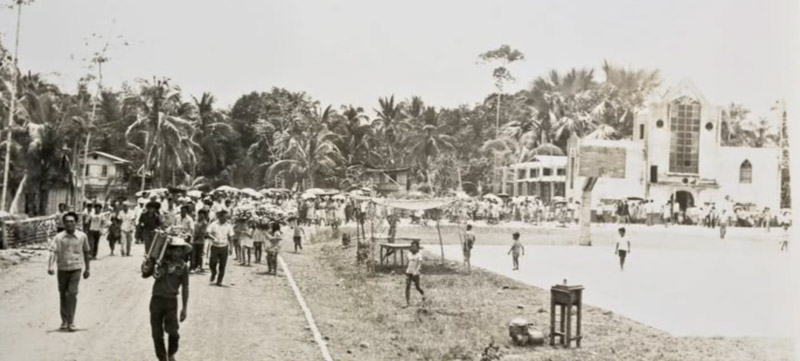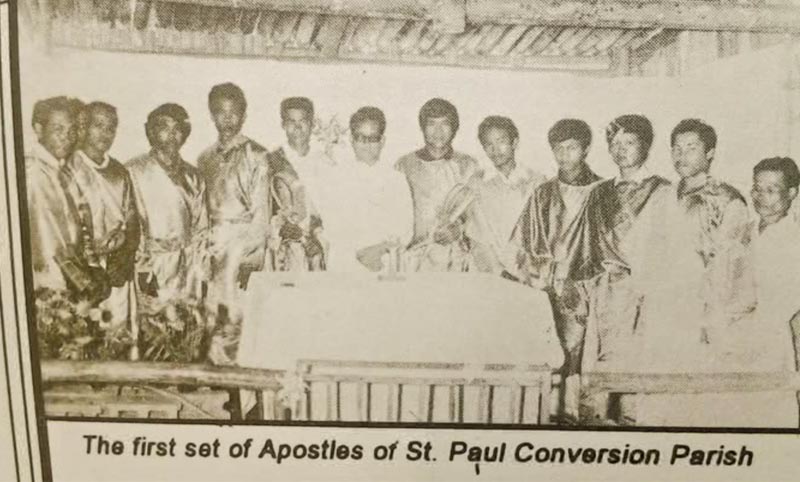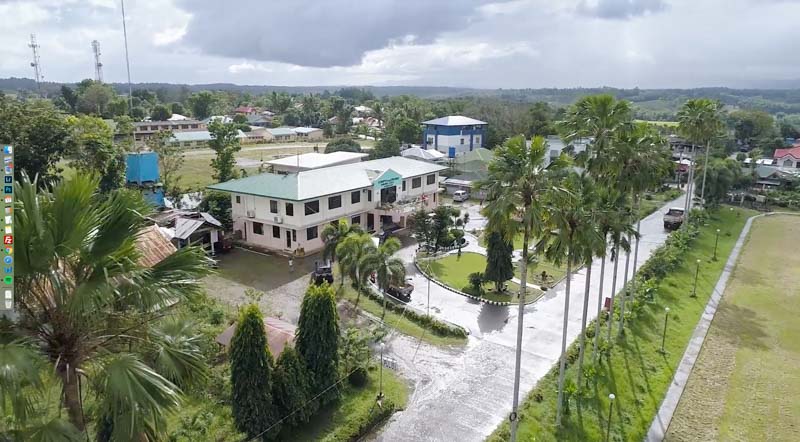History of Bingawan
During the last decade of the Spanish regime many Filipinos who fled from Spanish atrocities retreated to remote places to hide particular places worthy of note where the hillside of Quinangyana along the creeks, Maldespina and Kinalyan. In order to survive they made farms using the kaingin system and hunted wild animals for food. Two settlements were established: one in Maldespina (now Bingawan cemetery) and the other on the hilltop of Kinalyan near Quinangyana.

When the revolution broke out in 1896, some people from Calinog, Dumalag and Tapaz fled to the aforementioned places. In 1900, a big group of evacuees from Calinog arrived and joined those who were hiding. They escaped from the fury of American Soldiers who avenged the death of their fellow soldiers massacred by the Filipinos. A year after, some returned to Calinog but others stayed and made farms.
The two settlements wanted to unite and establish a community. So the settlers led by Gregorio Plaga, known as “Pakuribot” and insurgent leader, surveyed the hilltops. A plateau in Southern part was chosen because of the presence of the number of springs. In 1901 the community known as “BINGAWAN” was established. The name Bingawan derived from the creek which resembled a missing tooth, a term “Bingaw” used in the local dialect. This creek is located west of the present site of Bingawan Central School.
The early residents constructed a long building made of light materials. It accommodated forty families. They called it “pagnahi-an” because the partition was made from materials sewed together. That building was located at the roadside east of Bingawan Baptist Church.

This community as in need of capable leaders. So twelve were chosen from forty families. (The twelve leaders represented the twelve apostles of the Lord.) Those leaders were called by the early residents as “Founders of BIngawan”. The twelve leaders were: Martin Celeste, Eusebio Plaga, Conrado castroverde, Paulino celestial, Andres paren, gregorio (Goyo) Plaga, Eugenio celestial, Pablo Celebria, Eulogio Pormilda, Enrique Caspillo, Feliciano Gigare, and Atanacio Gener.
The Council of Elders has two consultants. They were Gregorio (Pakuribot) Plaga and Gregorio Lampeno, a rebel leader from Janiuay. According to the early residents these two were the most illustrious among them all and were ascribed with high respect. Lampeno was believed to have possessed supernatural powers, had a talisman and can beat his enemies very easily. They were accompanied by a brave woman, known as “Manding Beni”.
With the founding of the barrio Bingawan in 1901, was also the establishment of the BIngawan Baptist Church. The early residents were disgusted with the Spaniards because of their tyranny and religious hypocrisy. They responded to the preaching of the gospel by the protestant preachers, and they gladly embraced the evangelical faith. Amando Zamora, an ex-soldier from Luzon, trained under the American missionaries was brought to Bingawan by Gregorio Lampeno and became the first pastor of the church.
In summer of the year 1906, a great fire swept over the progressive community and resulted to a great loss of property and stored grains. The following months, a great famine occurred but Mateo Casalmer, then barrio lieutenant, challenged the residents to reconstruct their houses and the church building. “In a short time houses sprang up like mushrooms and the church building stood up like magic”, the old residents said. That was made possible because of the unparalleled cooperation and the unity of the people.
In August 1912, an energetic and intelligent leader came in the person of Rev. Antonio Plagata. He started the English Instruction and the school became progressive as the years went on. It became Bingawan Institute in 1924. The classes in the high school department were taught by Severo Cathedral, Tranquilino Bergante, and Delfin Dianala.
Rev. Antonio Plagata was not only a pastor and a teacher but also a statesman. He was one of the municipal councilors of Passi, where Calinog was still its barrio. He and the other three men from Calinog endeavored to make Calinog and independent municipality from Passi. These men were: Vicente Castronuevo, Francisco Casa, and Eugenio Carbon. As a result, in 1926 Calinog became an independent municipality. Rev.Plagata served as municipal councilor of Calinog until World War II. Other Bingawan residents who served in the municipality of Calinog were former Javier Celo and Municipal Councilor Macario Celestial.
In 1929 a public school was opened. This was made possible through the efforts of the following: Vidal Derecho, Florentino Faldas, Tranquilino Sorioso, Nicanor Cerbas, Fulgencio Catoera, Antonio Plagata, Rufino Pormilos, Esperidion Landero, Daniel Geretape, Jorge Lorca, Vicente gallaza, Primo catoera, Francisco Vargas, Leon Landero, Felix Sagotoy, paulino Celestial, casimiro pagara, Antonio catolico,Valeriano Derecho and Conrado Castroverde. The school site was donated by Apouses Eusebio Palma and Maximina Celo Palma.
After World War II, a complete elementary school was opened. Through the untiring efforts of Mrs. Sofia Paren and Mrs. Marcelina Castronuevo, public school teachers of Bingawan Elementary School, they were able to obtain eighty-four enrollees which comprised the first year high school classes with two sections, meeting the requirement for the opening of the barangay high school. The first two high school teachers who were assigned were Mrs. Myra S. jamili and Ms. Nicolasa A. Quilarto. Through their sacrifices and cooperation of the people of the municipality the high school expanded and in July 1984, was converted into a National High School.

The improvement of the community started in 1952, due to the untiring efforts of Hon. Victor C. Plagata, an elected councilor of Calinog. He paved the streets, improved the plaza and encouraged the community beautification. Gradually, the residents built big houses. A public market was constructed later. This made marketing easy for the people. More and more improvements were made when Hon. Victor C. Plagata was elected Vice Mayor of Calinog in 1955.
After a lapse of 10 years, another Bingawan resident was elected municipal councilor in the person of Dr. Victor S. Castronuevo. His victory in 1967 election added a name to Bingawan.
The restless spirit of Victor Plagata and Consolador Faldas enabled the great dream of Bingawan people became a reality. A bill authored by Hon. Congressman Ricardo Y. Ladrido and later became R.A. 5511, created the new municipality of Bingawan in the Province of Iloilo.
The bill was approved in the Congress in May, 1969 and signed into law in June, 1969. Thus, Bingawan a new municipality, is now independent from her mother municipality, Calinog.
The municipality was inaugurated on January 1, 1970 with Victor C. Plagata as the first mayor and Consolador G. Faldas as Vice Mayor and on April 10, 1970 the first set of officials of Bingawan were appointed.
